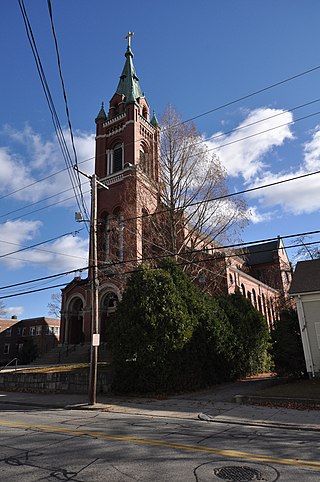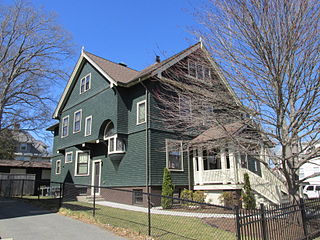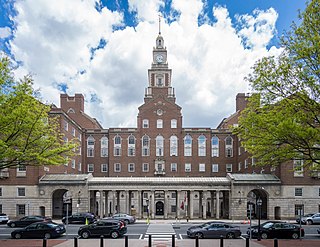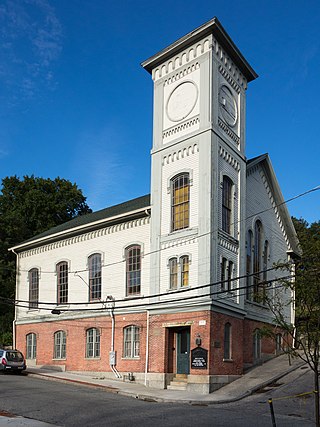
Peabody & Stearns was a premier architectural firm in the Eastern United States in the late 19th century and early 20th century. Based in Boston, Massachusetts, the firm consisted of Robert Swain Peabody (1845–1917) and John Goddard Stearns Jr. (1843–1917). The firm worked on a variety of designs but is closely associated with shingle style.

Thomas Alexander Tefft was an American architect, from Providence, Rhode Island. Tefft, one of the nation's first professionally trained architects, is considered a master of Rundbogenstil and a leading American proponent of its use. Prior to his untimely death, Tefft "offered the most advanced designs of [his] day in America"

Russell Warren (1783–1860) was an American architect, best known for his work in the Greek Revival style. He practiced in Bristol and Providence.

Stone, Carpenter & Willson was a Providence, Rhode Island–based architectural firm in the late 19th and early 20th Centuries. It was named for the partners Alfred Stone (1834–1908), Charles E. Carpenter (1845–1923). and Edmund R. Willson (1856–1906). The firm was one of the state's most prominent.

Clifton A. Hall (1826-1913) was an American architect from Providence, Rhode Island.
Domenic Thomas Russillo, AIA (1902-1980), was a minor American architect who practiced in mid-20th-century Rhode Island and Massachusetts.

Walter F. Fontaine was an American architect of French Heritage from Woonsocket, Rhode Island.

John Holden Greene (1777-1850) was a noted early nineteenth century architect practicing in Providence, Rhode Island. The bulk of his work dates to the late Federal period, and is mostly in the architectural style of the same name. Greene is responsible for the design of over fifty buildings built in the city between 1806 and 1830, almost half of which are still standing.

Alfred Stone was an American Architect. He was a founding partner of the Providence, Rhode Island, firm of Stone, Carpenter & Willson. Mr. Stone was best known for designing many prominent Rhode Island buildings, including the Providence Public Library, Union Station, buildings at Brown University and the University of Rhode Island, and many private homes.

William R. Walker & Son was an American architectural firm in Providence, Rhode Island, active during the years 1881 to 1936. It included partners William Russell Walker (1830–1905), William Howard Walker (1856–1922) and later William Russell Walker II (1884–1936).

Martin & Hall was an American architectural firm based in Providence, Rhode Island. It was established in 1893 as the partnership of architects Frank H. Martin and George Frederic Hall. After Martin's death in 1917 Hall practiced alone until his own death in 1928.

Albert Hadfield Humes (1867–1947) was an American architect working in Central Falls and Pawtucket, Rhode Island. He was known locally as a designer of private residences and schools.

Jackson, Robertson & Adams was an architectural firm out of Providence, Rhode Island. Established in 1912, it was originally made up of architects F. Ellis Jackson (1879–1950), Wayland T. Robertson (1873–1935), and J. Howard Adams (1876–1924).
Howard Hoppin was an American architect from Providence, Rhode Island.

George C. Mason & Son (1871–94) was an American architectural firm in Newport, Rhode Island.

Charles F. Wilcox (1845–1905) was an American architect practicing in Providence, Rhode Island.

Seth C. Bradford (1801-1878) was an American architect from Newport, Rhode Island.

Charles Lovatt Bevins (1844–1925) was an American architect from Jamestown, Rhode Island.

Edwin Thomas Banning (1864–1940) was an American architect from Providence, Rhode Island.

William R. Walker was an American architect from Providence, Rhode Island, who was later the senior partner of William R. Walker & Son.






















